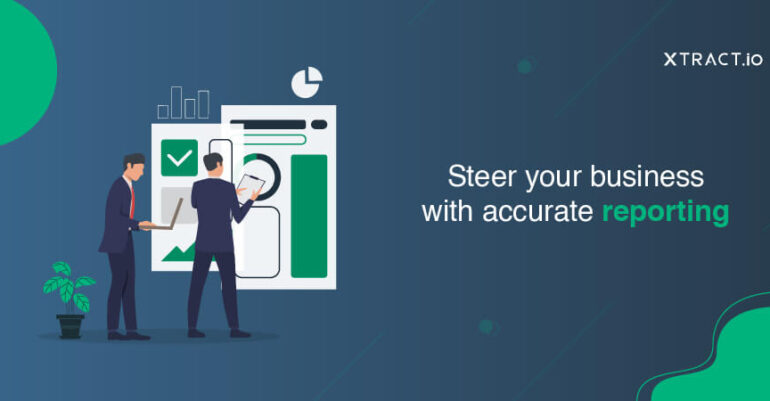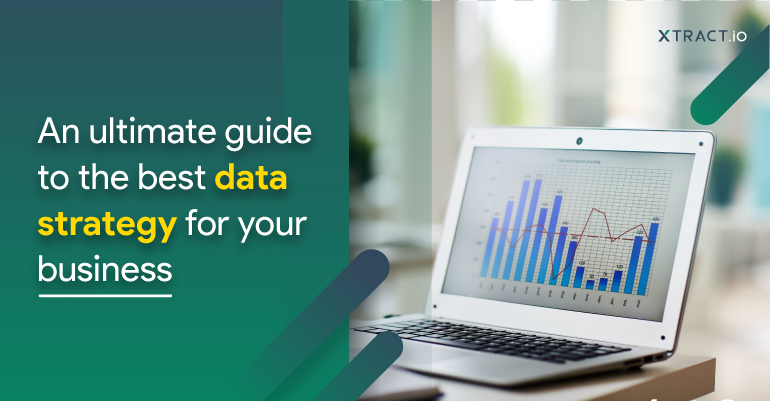Do you often find yourself drowning in a pool of data, struggling to make sense of the information you have at hand?
Data rich and information poor.
Even though it has been 37 years since the phrase ‘Data Rich and Information Poor’ (DRIP) was first coined in the book In Search of Excellence, it still depicts how many organizations are overflooded with data.
With technologies and devices booming, the amount of data generated has exploded. Businesses need to collect and analyze data from various sources like spreadsheets, documents, databases, websites, online forums, ERP, CRM, and more.
Many organizations who have mastered managing the ever-exploding data are still struggling to extract valuable insights. Without proper business intelligence analytics and reporting solutions, businesses would be sailing blindly without any direction and purpose through the rough seas.
So what is BI reporting?
Business Intelligence analytics and reporting tools allow you to create various reports. The two most commonly used methods of BI reporting are Canned reports and Ad hoc reports.
Business Intelligence analytics and reporting is a mechanism where you use data and technology to predict the future, formulate strategies, and navigate the right way.
Two commonly used methods in BI reporting
Various reports can be generated with Business Intelligence analytics and reporting tools. The two most commonly used methods of BI reporting are Canned and ad hoc reports.
| Report Type | Canned Reports | Ad Hoc Reports |
| What are they? | These are the automated reports tracking key metrics and scheduled at the desired frequency (weekly, monthly, quarterly, yearly). | These are the dynamic reports created by dragging and dropping elements into your dashboards. |
| Also known as | Automated / pre-built reports | Self-service / real-time reports |
| Time-to-insights | Time taken to derive insights is more as data is analyzed from large and disparate sources. | Quick and accurate insights as data is analyzed from specific sources. |
| Advantages | These reports give businesses the feasibility to make collaborative decisions by easily sharing the reports across the organization. | These reports give businesses the agility to draw insights and the flexibility to customize their reports and dashboards. |
| When are they used? | These reports are used to get a holistic view of your entire business performance. | These reports are used to discover hidden insights, trends, and recurring patterns. |
| Example | Quarterly reports on your business’s overall revenue shared with key decision-makers. You share collective insights and take necessary actions to improve your growth. | Sales reports tracking your CRM’s sales metrics across the customer journey. You can analyze real-time data and improve your retention rate. |
| Who can create them? | You need to have the technical expertise to know which metrics to measure and be convenient to use various reporting tools. These reports are created by IT professionals and analysts. | You do not need any design or technical skills to build them. These reports can be created even by any non-technical person without any help from IT. |
| Data customization & manipulation | Once the reports are configured, you cannot change the metrics or manipulate their content. | You can customize your reports by selecting metrics, applying filters, changing visualization type, building dashboards, and generating quick reports within minutes. |
The goal of BI reporting
BI reporting’s primary goal is to equip everyone in your organization to ask business-critical questions and get quick answers from data in the form of interactive reports. Business Intelligence analytics and reporting tools help both technical and non-technical users derive meaningful insights rather than searching through spreadsheets, databases, and other applications.
Get a complete picture of your data
Most companies have an abundance of data siloed across various departments (dark data). To make a well-informed decision, you need to pull data from various sources like web forms, CRM, social media, shipping documents, claims systems, payments, helpdesk systems, marketing automation systems, production data, survey forms, and more.
Analytics and reporting tools will help you maintain a single source of truth and accelerate your time-to-insights. You no longer need to spend your time collecting data manually.
You can eliminate duplicate and missing data values, making your data accurate for analysis. You can improve your productivity and reduce the time taken to prepare your data for further study.
Tell compelling stories, back it up with data
Having all the information in the world at our fingertips doesn’t make it easier to communicate: it makes it harder.
― Cole Nussbaumer Knaflic, Storytelling with Data
Have you ever been in a meeting where you felt nobody was listening to your views? You had spent weeks doing in-depth research and measuring all the specifics but in vain. Have you ever thought this is because you’ve overloaded your presentations with many bullet points with non-appealing visuals?
Research shows that our attention span has reduced to 8 seconds as opposed to 12 seconds in 2000. Stories are the best way to grab your readers’ attention.
In his book Brain Rules, John Medina says, “We are incredible at remembering pictures. Hear a piece of information, and three days later, you’ll remember 10% of it. Add a picture, and you’ll remember 65%.“
With a proper reporting system, you can weave the best reliable story with your data. You will not only gain user’s attention but also make them aligned with your goals.
Most often, when you are analyzing, you overboard your reports with too many charts and numbers. This might make your audience care less about the insights.
As analysts, you are at a transitive state where you should not just be able to provide relevant data but also clearly articulate the critical insights derived from the collected data. It would be best if you bridged the gap between logical interpretation and creative communication.
Our business intelligence solutions have customized reports that will help you eliminate any visual clutter and create clean reports. You can design compelling dashboards, set the dimensions and metrics, select the best visualizations, and filter unwanted data.
How does BI reporting benefit your various departments?
Let’s see how business intelligence analytics and reporting help you navigate your business the right way across various departments.
Sales – Boost your revenue
You can improve sales prospecting by analyzing your CRM and increase your customer success rate. Monthly reports on your Sales can help you analyze individual reps’ performance, tracking win rates, unique sales calls, and sales cycles.
Quarterly sales performance reports empower Sales leaders to reduce costs and increase revenue by analyzing customer acquisition cost, customer lifetime value, overall revenue, and profitability.
HR – Improve your employee experience
Employees are the backbone to drive any business. You can attract the best talent for your company and step up your recruitment game with real-time reports tracking your time-to-hire, candidate experience, sourcing channels, open positions, hiring costs.
You can maintain your company culture by identifying employee concerns and providing timely support. Employee retention reports help HR professionals analyze data from HRMS, payroll, ERP systems to improve employee turnover rate tracking recruiting costs, training costs, competitive salary, employee perks, and attrition rate.
Marketing – Increase your ROI
You can get granular insights of customers from multiple marketing channels with ease. BI reporting allows marketers to connect data from websites, CRM, social media platforms, and review channels to give you a detailed view of your customers across their journey.
Periodic lead reports help you improve your lead generation strategies by analyzing your web and social media data tracking critical metrics like clicks, CTR, conversion rate, and bounce rate. Campaign reports help you increase your advertising ROI by analyzing demographic data and sending out targeted campaigns.
Our business intelligence solutions offer a suite of services exclusively for Marketers to track customer behavior across their journey. Our sentiment analysis allows you to understand your customer emotions by monitoring online reviews and comments across various social media.
Operations – Improve your supply chain efficiency
A quick report on your inventory will help you forecast which products are on-demand and stock up your inventory. Real-time reports of your assets will help identify any defective assets, provide immediate solutions, and reduce maintenance costs.
Real-time shipment reports help shipping operators monitor information like order time, shipping status, estimated delivery to track shipment issues and ensure on-time delivery.
Our operational analytics helped a car rental company serve customers worldwide and improve their inventory turnover by 28%. Our reports tracked more than 30 KPIs for more than 8000 cars. Read more about how our operational reports helped here.
Are you ready to steer your business the right way with accurate business intelligence analytics and reporting solutions? Book a demo, and let our team show you how we can take it forward.







